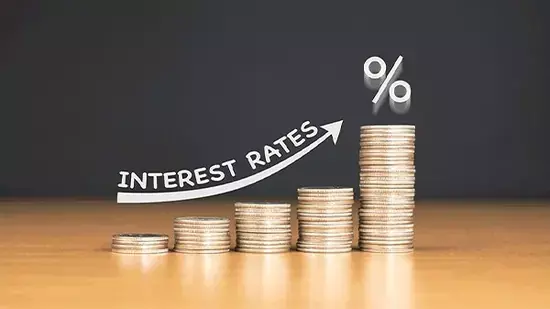
Image Credits: Source
Fixed Deposit - FD Interest Rates, Calculation & How to Apply
India, 7 March 2024 12:16 PM GMT
Editor : Ankur Kumar Jha |
Ankur who specialises in branded associations is otherwise an introvert whose heart lives in the Himalayas. He often geeks out on the latest advertising trends and strives to draw the best synergy with leading Indian brands on their journey towards socially conscious digital marketing campaigns.
Creatives : Bushra Naaz
She plays a pivotal role in shaping the narrative of the platform, ensuring that every piece of content is informative, engaging, and thought-provoking. With a deep understanding of current affairs and social issues, she strives to deliver content that not only educates but also inspires positive change within society.
Fixed Deposits remain a popular investment option due to their stability and predictability
Fixed Deposits (FDs) remain one of the most popular investment options in India. FDs usually offer higher returns as compared to savings accounts, which is why many investors usually opt for FDs. The most attractive feature of an FD is its stability and predictability. Unlike stock market investments, the returns from FDs are fixed, and the investor can rest assured that the returns will not vary over the investment period. Moreover, the fixed deposit interest rates are vastly different from savings account interest rates. This article aims to explore fixed deposit interest rates along with the calculation of FDs and how to apply for them.
Fixed Deposit Interest Rates:
The Reserve Bank of India lends money to banks and other financial institutions to maintain liquidity. The rate at which the central bank lends money to these financial institutions is known as the repo rate. Banks borrow money from the central bank, and the amount charged is known as the repo rate. In turn, banks offer loans to their customers at an interest rate higher than the repo rate. This difference, known as the interest rate spread, determines the cost of borrowing and the fixed deposit interest rates offered by the bank.
The fixed deposit interest rates offered by financial institutions change with the changes in the repo rate. When the repo rate falls, banks lower the interest rates they pay on savings accounts and fixed deposits. In contrast, when the repo rate increases, banks usually increase the interest rate paid on fixed deposits to retain customers. Also, the tenure of the FD determines the interest rate paid. The longer the deposit tenure, the higher the interest rate. A premature withdrawal of the fixed deposit leads to a penalty, and the investor does not receive the full interest.
FD Calculator:
Calculating the returns from a fixed deposit is simple. The interest is calculated annually or quarterly based on the deposit tenure and interest rate. For example, if an FD of INR 1 lakh is made for one year at 6% per annum (p.a.), the interest earned will be INR 6,000. The total amount payable on maturity will be INR 1,06,000.
However, calculating manually for longer tenure deposits and varying interest rates may be cumbersome. In such cases, individuals may use an FD calculator. The FD calculator is a financial tool that helps an individual to determine the returns from an FD. The user has to input the deposit amount, tenure, and interest rate. The calculator then computes the interest earned and the amount payable on maturity. The FD calculator also allows the user to compare the returns earned from different financial institutions.
How to Apply for an FD:
Applying for an FD is a simple process. The investor has to approach the financial institution of their choice with all the required documents, such as identity proof, address proof, and PAN card. The investor can choose the deposit tenure and the interest payout option- monthly, quarterly, half-yearly, or annually. The interest earned is subject to tax, as per the applicable tax rate. The financial institution provides the investor with a fixed deposit receipt, which is also known as the FD certificate. The FD certificate contains the deposit amount, tenure, interest rate, and maturity date. The investor can use the certificate to apply for a loan against the FD or for premature withdrawal.
Apart from bank fixed deposits, individuals may also consider investing in corporate FDs. The returns offered by corporate FDs are higher than bank FDs, but they also carry a higher risk. Corporate FDs lack the guarantee of the Deposit Insurance and Credit Guarantee Corporation (DICGC), which covers bank deposits up to INR 5 lakh per customer per bank.
Conclusion:
Fixed Deposits remain a popular investment option due to their stability and predictability. The fixed deposit interest rates usually vary with the tenure and the prevailing repo rate. An FD calculator can aid investors in comparing the returns offered by different financial institutions. Individuals must gauge all the pros and cons of trading in the Indian financial market before investing in an FD.
 All section
All section














